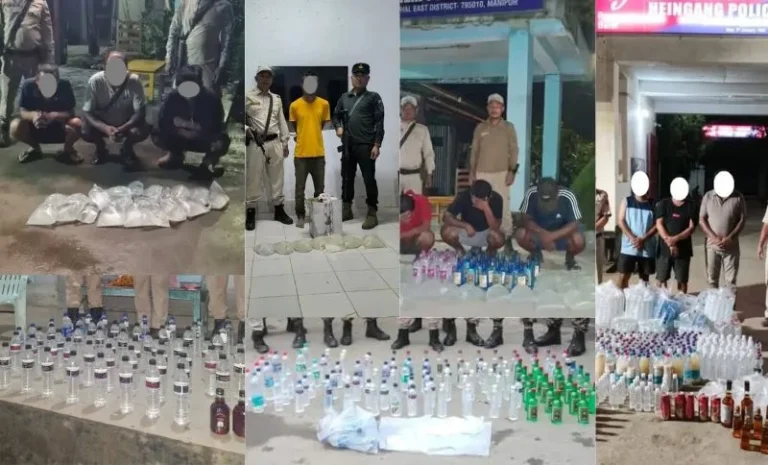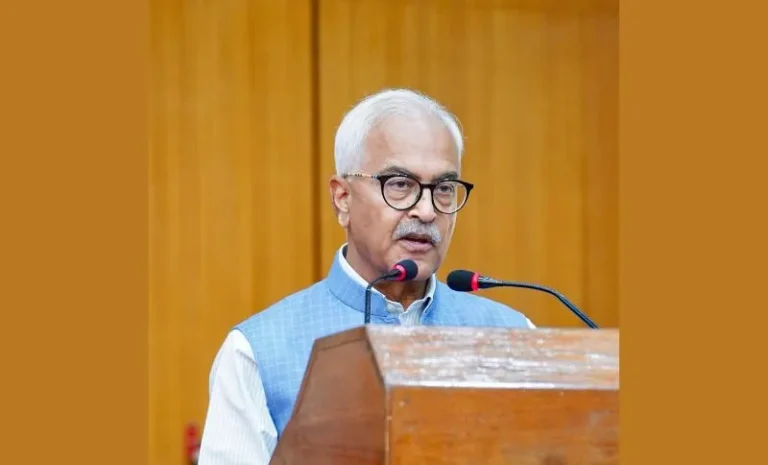Manipur Weapons Recovery: Insights into the Security Situation
Summary:
According to recent reports, a significant recovery of weapons has been made in Manipur, with over 2,681 arms seized. Out of these, only 1,200 were confirmed to have been looted from police armories. This revelation points to a broader concern about the state of illegal arms in the region and the involvement of insurgent groups. The government is ramping up efforts to restore order, but the sheer number of weapons highlights the security challenges the state is facing.
The Complex Issue of Weapons in Manipur: A Security Challenge
Manipur, a northeastern state in India, has long been embroiled in a complex and volatile situation concerning armed insurgency, ethnic tensions, and political unrest. The recent recovery of over 2,681 weapons, of which only about 1,200 were looted from police armories, is a significant development in understanding the scale of illegal arms circulation in the region. This ongoing security challenge has sparked national and local conversations on how the state and central governments can address the situation more effectively.
But what does this really mean for the state of Manipur and its citizens? What implications does this have for the broader security of the region? Let’s dive deep into the issue.
Manipur’s Historical Context: Why the Weapon Problem Exists
A Long History of Armed Insurgency
Manipur’s struggles with insurgency date back several decades, with various armed groups taking up arms against the Indian government. These groups, often divided along ethnic lines, seek various political goals, ranging from greater autonomy to outright independence. Over the years, these insurgencies have led to significant violence, unrest, and instability.
The state’s geographical location, bordering Myanmar, has also made it a hotspot for illegal arms smuggling. Many insurgent groups are known to operate from across the border, making it easier for weapons to flow into Manipur undetected.
Weapons Looting: A Growing Concern
One of the most alarming aspects of the weapons recovery in Manipur is the fact that nearly half of the weapons were looted from police armories. This looting highlights the vulnerability of state security forces to insurgent attacks and raises questions about the adequacy of security measures in place to protect vital government assets.
The looted weapons have undoubtedly bolstered the capabilities of various insurgent groups, making them more dangerous and capable of carrying out attacks against both state forces and civilians.
The Numbers: Breaking Down the Weapon Recovery
What the Figures Reveal
The recovery of 2,681 weapons in Manipur is a staggering number, but what’s even more concerning is the fact that over 1,400 of these weapons were unaccounted for, meaning they were not looted from police armories. This suggests that there is a thriving black market for arms in the region, with weapons flowing in from external sources, likely through smuggling networks operating along the porous Indo-Myanmar border.
These weapons range from small arms like pistols and revolvers to more sophisticated firearms, including assault rifles and automatic weapons. The diversity of arms recovered points to the scale and sophistication of the arms trade in the region.
What Does This Mean for Security Forces?
For the security forces operating in Manipur, the recovery of these weapons is both a victory and a sobering reminder of the challenges they face. While the recovery of such a large number of weapons is undoubtedly a success, it also serves as a wake-up call about the sheer scale of the problem. Insurgent groups are not only well-armed, but they are also becoming increasingly bold in their operations.
The looting of police armories is a significant threat, as it means that insurgents are gaining access to government-grade weapons that they can use in their operations. It also raises concerns about the safety and security of other critical state assets.
The Role of Insurgent Groups in the Arms Trade
How Insurgent Groups Operate
In Manipur, various insurgent groups operate with differing objectives, but one common thread is their reliance on arms to further their causes. These groups are often well-organized and have established networks that allow them to smuggle arms into the region. The Indo-Myanmar border, with its rugged terrain and lack of stringent controls, provides a perfect route for these groups to bring weapons into the state.
Some insurgent groups have also been known to collaborate with international arms dealers, further complicating the situation. The influx of arms into the region is not just a local issue but a part of a broader, more globalized trade in illegal arms.
The Impact on Civilians
For the average citizen in Manipur, the proliferation of weapons is a constant source of fear and insecurity. Insurgent groups often use their arms to intimidate local populations, extract resources, or enforce their own versions of law and order. The presence of these weapons exacerbates the already fragile peace in the region and makes it difficult for any long-term stability to take hold.
Government Response: What’s Being Done?
Steps Taken by the Manipur Government
In response to the growing arms problem, the government of Manipur has stepped up its efforts to recover looted weapons and crack down on illegal arms smuggling. The state’s security forces, with support from central agencies, have been conducting regular raids, searches, and intelligence-based operations to locate and seize illegal arms.
The government has also implemented stricter border controls to prevent the inflow of weapons from neighboring Myanmar. However, given the terrain and the longstanding smuggling routes, these measures have only been partially successful.
Central Government’s Role
The central government has also been closely involved in efforts to restore order in Manipur. The Ministry of Home Affairs has been working in coordination with state agencies to improve intelligence gathering and enhance the capabilities of the state’s security forces.
One major initiative has been the deployment of additional central paramilitary forces to Manipur to help maintain law and order. These forces have been instrumental in conducting operations against insurgent groups and recovering illegal arms.
Challenges and the Road Ahead
The Border Issue
One of the biggest challenges in controlling the arms problem in Manipur is the state’s proximity to Myanmar. The long, porous border is difficult to patrol, and insurgent groups have been able to exploit this to smuggle arms into the region. Unless more stringent border control measures are implemented, it will be difficult to stem the flow of weapons into the state.
The Need for Political Solutions
While the recovery of weapons is an important step in addressing the security situation in Manipur, it’s not a long-term solution. The root causes of the insurgency—political grievances, ethnic tensions, and demands for autonomy—need to be addressed through dialogue and political engagement. Without a lasting political solution, the arms problem will continue to fester.
Empowering Local Communities
Local communities in Manipur have a critical role to play in addressing the arms problem. By empowering local populations and building trust between citizens and the government, it may be possible to reduce the influence of insurgent groups and disrupt their operations. Community policing, intelligence sharing, and economic development programs can help create a more stable and secure environment.
Conclusion
The recovery of 2,681 weapons in Manipur is a stark reminder of the ongoing security challenges facing the state. With a large number of weapons still unaccounted for and the constant threat of insurgency looming, the road ahead will not be easy. However, through coordinated efforts between the state and central governments, stricter border controls, and political engagement, it may be possible to bring about a lasting peace in the region.
FAQs
- Why were the weapons looted from police armories in Manipur?
Insurgent groups targeted police armories during periods of unrest, taking advantage of vulnerabilities in security. - How many weapons were recovered in Manipur recently?
Over 2,681 weapons were recovered, with about 1,200 confirmed to have been looted from police armories. - What role does the Indo-Myanmar border play in arms smuggling?
The porous border between India and Myanmar allows insurgent groups to smuggle weapons into Manipur, contributing to the proliferation of illegal arms. - What measures are being taken to prevent further looting?
The government has increased security at armories, conducted regular raids, and enhanced intelligence efforts to prevent future looting of weapons. - Is there a long-term solution to Manipur’s arms problem?
While recovery of weapons is important, a long-term solution involves addressing the root causes of insurgency through political dialogue and community engagement.




